Aaerobic Digester
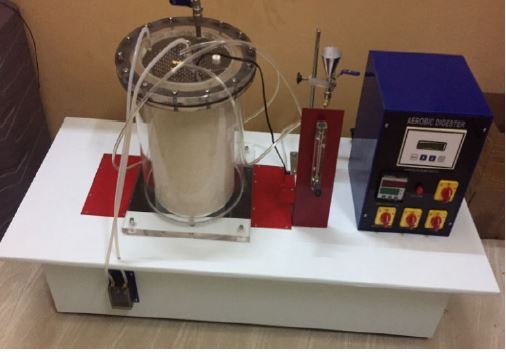
Order Code: 22236272.2R
Category: General Lab Equipment IV
Introduction:- The continuous activated sludge process has been successfully employed in public health engineering facilities for nearly a century. The Bench Aerobic Digester is designed as a complete facility for the study of this process. S...
SPECIFICATION
Introduction:-
- The continuous activated sludge process has been successfully employed in public health engineering facilities for nearly a century.
- The Bench Aerobic Digester is designed as a complete facility for the study of this process. Synthetically prepared wastewater can be used to gain practical insight into operating parameters and purification efficiencies.
Description:
- The equipment consists of a 10-20 liter reactor vessel mounted on a vacuum-formed plastic base, with a liquid feed pump, air supply and instrumentation for process monitoring and control.
- The cylindrical wall of the reactor is made of porous plastic material to retain the solids in suspension while allowing the passage of the treated water to the outer outlet annular chamber. This design allows the study of the essential characteristics of the aerobic treatment process without the inconvenience of having to decant the solids sufficiently for external recycling – a well-known laboratory problem.
- The porous lining can be removed for cleaning; a replacement liner is supplied for these cases.
- Wastewater is drawn from a ground-based feed tank (supply tank) by a peristaltic pump driven by a DC motor. The rotational speed, and therefore the flow rate, are precisely set by a 10-turn potentiometer. The pump delivers the feed liquid to the reactor through a transparent lid. Air is supplied by a small compressor at a metered rate, and is discharged to the base of the reactor through a spider-type dispenser, designed to avoid clogging and to ensure sufficient bubbling for stirring and reaction. The liquid level of the reactor is maintained at a constant value of 5-10 litres, by means of an adjustable overflow connected to the outer annular chamber of the vessel. The discharge is by gravity to a product tank placed on the ground (tank not supplied).
- The reactor temperature is maintained by a 3-term controller that varies the power supplied to an immersion heater located within the vessel. Any temperature between room temperature and 35°-+60°C can be selected, with the best conditions being a few degrees above the daytime maximum in the user's laboratory.
- Dissolved oxygen and pH probes and meters are included.
- The reactor lid contains a gas outlet port, suitable for sampling the gases for later analysis.
Specifications:
- A 10l-20l bench top aerobic reactor, complete with peristaltic feed pump, air compressor and temperature control system. Dissolved oxygen and pH probes and meters are included. The reactor consists of a cylindrical porous liner held with sealing rings between the lid and the base; in this way it can be easily removed for cleaning or replacement. Suspended solids are thus retained within the reactor, while treated water is filtered through the porous liner to an outer outlet annular chamber. The water level is maintained by an adjustable constant head overflow.
- This digestion system is designed for safe and reproducible operation over periods of many days.
- The unit is mounted on a molded plastic base with a drainage channel molded into the interior to collect spills and wash water.
- Metal items made of stainless steel
- Anodized aluminum structure and painted steel panels.
- Diagram on the front panel with distribution similar to that of the elements in the real equipment.
- Cover for the reactor with manual valve and its respective holes
- Cooling or heating coil
- Thermostatic bath (up to 60°C) controlled from computer
- Capacity: 6-10l, power: 600W
- Temperature sensor to obtain the temperature in the thermostatic bath.
- Pump for circulation of hot water in the thermostatic bath controlled from the computer.
- Air compressor, range: 0-5 l/min controlled by computer.
- Diffusion plate for air inlet
- Water flowmeter, range: 0-0.5 l/min
- Overflow for filtered water outlet
- Valve at the bottom for sludge removal
- To monitor digestion
- Temperature sensor
- pH sensor
- Dissolved Oxygen Sensor.
CONTROL SYSTEM, ACQUISITION AND DATA MANAGEMENT, COMPOSED BY CONTROL INTERFACE BOX:
- Control Interface Box with process diagram on the front panel, with the same distribution as the equipment elements, for easy understanding by the student.
- All the sensors with their respective signals are adequately prepared for the output to the computer from -10V to +10V.
- Cable for control interface box and co computer
- The control elements of the equipment are permanently controlled from the computer, without the need for changes or connections during the entire test process.
- Simultaneous display on the computer of all the parameters involved in the process.
- Calibration of all sensors involved in the process.
- Real-time representation of the system response curves
- Storage of all process data and results in one file
- Graphical representation in real time of the responses in the system/process
- All the values of the actuators can be changed at any time from the keyboard, allowing the analysis of the curves and responses of the entire process.
- Shielded and filtered signals to avoid external interference
- PID control in real time with flexibility of modifications of the PID parameters in real time of the parameters that intervene in the process simultaneously
- Proportional control, integral control and derivative control, based on the real mathematical formula of the PID, by changing the values at any time, of the three control constants (proportional, integral and derivative constants).
- Control in real time with flexibility of parameter modifications from the computer keyboard, at any time during the process.
- Real-time control for pumps, compressors, resistances, control valves, etc.
- Open control allowing modifications at any time and in real time, of the parameters involved in the process, simultaneously.
- Three levels of security, one mechanical in the equipment, another electronic in the control interface and the third in the control software.
CONTROL SOFTWARE, DATA ACQUISITION AND DATA MANAGEMENT:
- Compatible with current Windows operating systems. Graphic and intuitive simulation of the process on the screen. Compatible with industry standards.
- Recording and display of all process variables automatically and simultaneously.
- Flexible, open and multicontrol software developed with current graphic window systems, acting on all process parameters simultaneously.
- Analog and digital PID control
- Menu for the selection of the PID and the set point required in the entire working range.
- Handling, manipulation, comparison and storage of data
- Sampling rate of 250 KS/s
- Calibration system for the sensors involved in the process.
- Allows the entry of the alarm status and the graphic representation in real time
- Comparative analysis of the data obtained, after the process and modification of the conditions during the process.
- Open software allowing the teacher to modify texts, instructions, teacher and student passwords to facilitate the control of the teacher over the student, and that allows access to different levels of work.
Items Included:
- All items mentioned
- Cables and accessories for normal operation
- Computer
- Manuals:
- required services
- assembly and installation
- Interface and Control Software
- Start up
- Security
- Maintenance
- Calibration
- Practice Manual
Demonstration Possibilities:
- Acclimatization of a fully mixed biological reactor
- Measuring changes in COD and MLSS as performance criteria
- Establishment of stoichiometry and kinetics of aerobic biological processes
- Gas/Liquid Mass Transfer
- Residence time distributions
- Extrapolation to industrial scale at 100%
- Study of the effect on the quality of the effluent of:
- concentration of influent substrate ('loading rate')
- liquid flow rate and reactor volume ('retention time')
- air flow
- temperature
- pH stability
- Nutrient deficiency
?????????????????????Technical characteristics:
- Feed pump: 24V DC
- peristaltic
- 0-30rpm
- Corresponds to 0-40 L/day
- Air Compressor : 120-240V
- 0-3.0 L/min (STP)
- Reactor Vessel : Max. 10L-20L
- pH meter : 0.00-14.00
- Dissolved oxygen meter: Range: 0-100% saturation
- Resolution: 2%
- Reactor heater : Toughened glass, immersion, electric, 200W
- Temperature controller: 3 term PID
- Temperature limit set to 35°C???????
Essential accessories:
- Plastic tanks for feed and product, typically 30-50L.
- For placement on the floor (not supplied)???????
Requirements:
- Electrical Supply - 220-240 1HP 60HZ
Additional Components:
- The equipment include data acquisition, software, and all necessary connection cables.
- Overall dimensions
- Height : 0.50-0.80m
- Width : 0.70-1.00m
- Depth : 0.50-0.6m

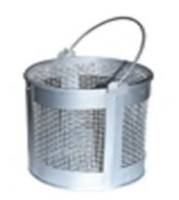
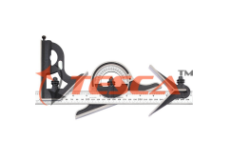
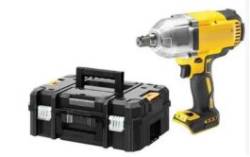
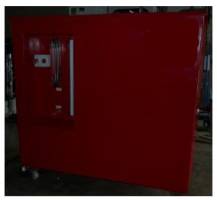
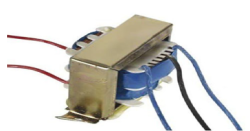
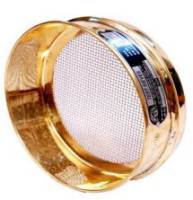
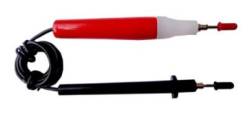
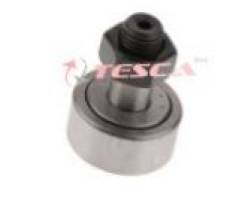
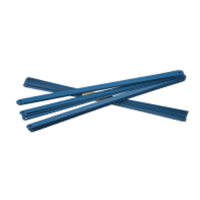

 91-9829132777
91-9829132777